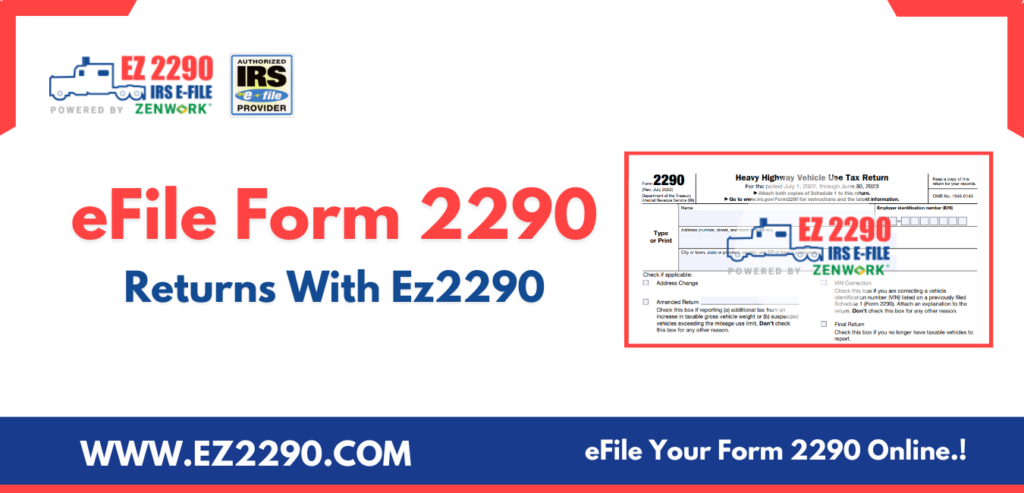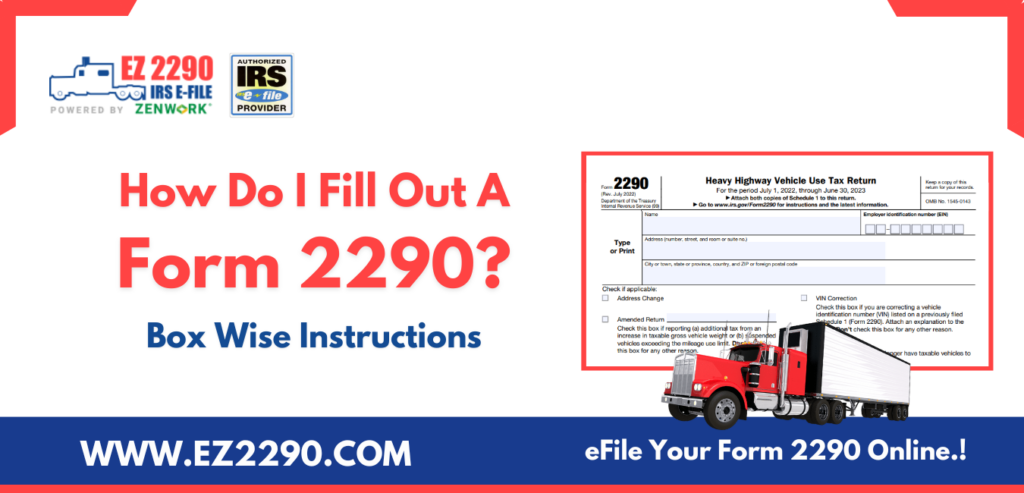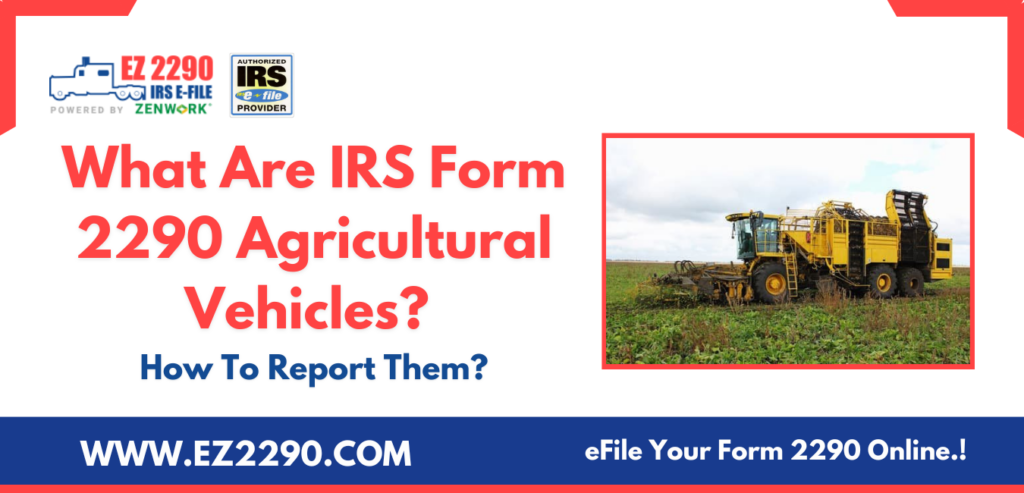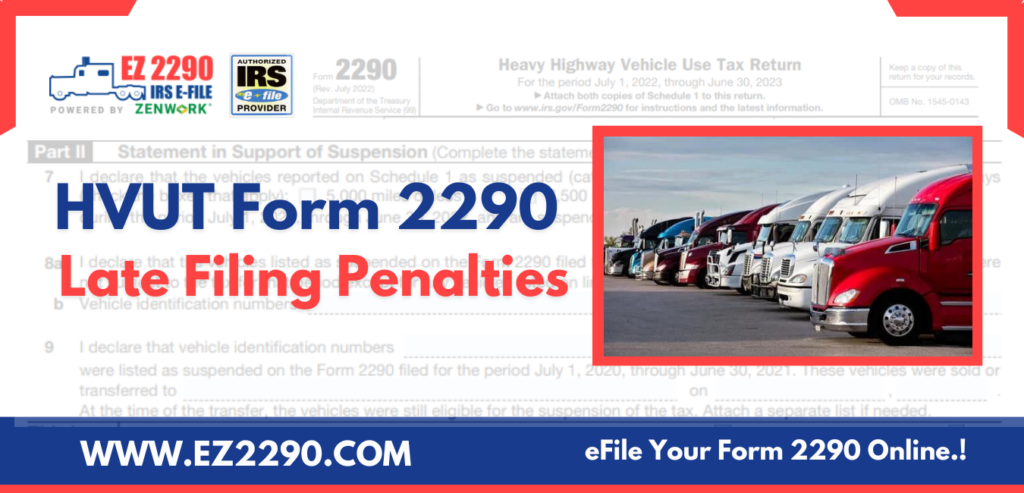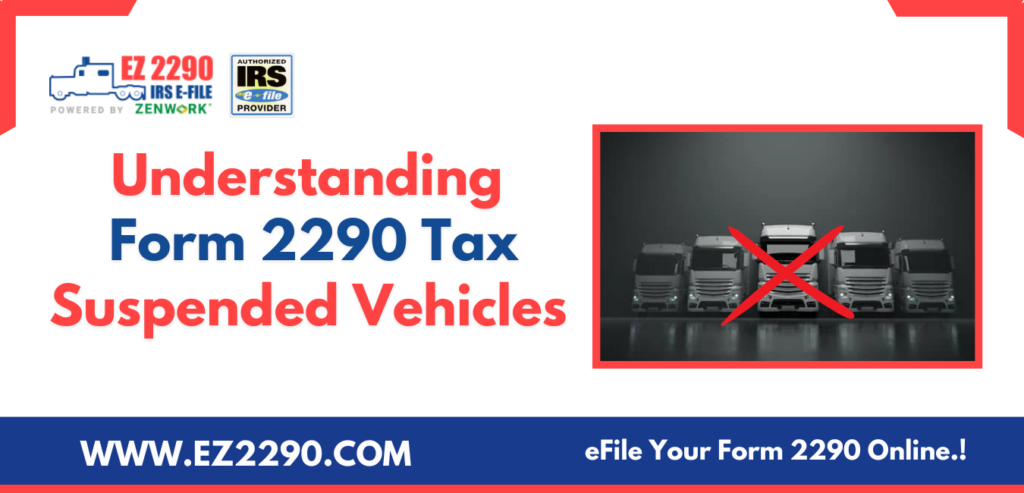
When it comes to HVUT, it’s never too early to start preparing for it. As a trucker, getting your taxes in order can be complex, and starting well in advance is crucial. In this blog post, we’ll share some practical tax tips that will help you prepare for the HVUT season and avoid any last-minute headaches.
Tax season can be stressful for everyone, but it can be especially daunting for truckers. The Heavy Vehicle Use Tax (HVUT) is an annual tax that must be paid by all truckers operating vehicles weighing 55,000 pounds or more.
As the HVUT season approaches, getting your tax affairs is essential to avoid penalties and unnecessary headaches. This blog post will share valuable tips to help you prepare for the HVUT season and stay on top of your tax obligations.
So let’s get started!

eFile 2023-24 Form 2290 & Get Schedule 1
HVUT Demystified: Understanding the Significance of Heavy Vehicle Use Tax for Truckers
HVUT is a federal tax imposed on heavy vehicles with a gross weight of 55,000 pounds or more, and it’s an annual tax that must be paid to the Internal Revenue Service (IRS). The funds collected from HVUT are used to maintain and improve the nation’s highways, which makes it a crucial part of the trucking industry.
The HVUT season runs from July 1st to June 30th of the following year, and the tax must be paid before the deadline to avoid penalties and interest charges. Failure to comply with the HVUT can result in significant fines, negatively impacting your business.
Apart from complying with the law, paying HVUT can benefit your business in several ways. For instance, paying the tax entitles you to a stamped Schedule 1, which is necessary for registering your vehicle and renewing your license plates. Additionally, paying HVUT can help you claim a tax deduction for the expenses incurred while operating your heavy vehicle.
It’s worth noting that certain exemptions and exclusions are available for vehicles used in specific operations, such as agriculture, logging, and government. For instance, if you use your vehicle primarily for farming purposes, you may be eligible for an exemption from the HVUT. However, to qualify for these exemptions and exclusions, you must provide sufficient documentation and meet specific criteria.
HVUT Tax Tips for Truckers
Preparing for the HVUT season can be daunting, but with the right approach, you can streamline the process and ensure you’re fully compliant with the law. Here are some essential tax tips that can help you get ready for the upcoming HVUT season:
Organize Your Records And Documentation
Organizing your records and documentation is essential for preparing your HVUT tax return accurately and efficiently. It helps you keep track of your mileage, fuel purchases, and maintenance expenses, which can be used to claim deductions and exemptions that can lower your tax liability.
Here are some specific documents you should gather and organize when preparing for the HVUT season:
- Vehicle information: This includes the make, model, year, and vehicle identification number (VIN) of your heavy vehicle. You will need this information when filing your tax return.
- Mileage records: Keeping track of your mileage is crucial for determining your HVUT tax liability. You should maintain a logbook that records the date, starting and ending odometer readings, and the purpose of each trip.
- Fuel records: Fuel purchases are a significant expense for truckers, and keeping track of them is crucial for claiming a fuel tax credit. You should maintain records of all fuel purchases, including the date, location, amount, and cost.
- Maintenance records: Regular maintenance is essential for ensuring your vehicle is safe and reliable. You should keep records of all maintenance and repair work, including receipts and invoices.
- Proof of payment: When filing your HVUT tax return, you must provide proof of payment, such as a canceled check, credit card statement, or electronic payment receipt.
- Exemption and suspension documents: If you’re eligible for an exemption or suspension from the HVUT, you must provide supporting documents, such as agricultural or logging use proof.
eFile HVUT Form 2290 For 2023-24 Tax Year
Review Previous Tax Returns
Reviewing your previous tax returns is essential in preparing for the HVUT season. It can help you identify any errors or omissions that may have led to penalties or interest charges and identify areas where you can improve your tax planning and reduce your tax liability.
Here’s a more detailed explanation of how to review your previous tax returns:
- Look for errors or omissions: Review your previous tax returns and look for any errors or omissions that could result in penalties or interest charges. For example, you may have missed a deduction or credit you were eligible for or made a mistake in calculating your tax liability.
- Identify areas for improvement: Reviewing your previous tax returns can help you identify areas where you can improve your tax planning and reduce your tax liability. For example, you may have overlooked deductions or credits that could have lowered your tax bill or missed a deadline that resulted in penalties or interest charges.
- Check for consistency: Make sure that your previous tax returns are consistent with each other. Check that the income, deductions, and credits reported in your previous tax returns are accurate and consistent with your current records.
- Verify personal information: Double-check that your personal information, such as your name, social security number, and address, is correct and up-to-date. Incorrect personal information can lead to delays and errors in tax return processing.
Keep Up With Changes In The Tax Law
Keeping up with changes in the tax law is critical for truckers to ensure compliance with HVUT and other tax laws. Tax laws change frequently, and failure to comply with these changes can lead to penalties, fines, and even legal trouble. Here are some tips on how to stay up-to-date with tax law changes:
- Subscribe to IRS updates: The IRS provides regular updates on tax law changes, including new regulations, tax rates, and deadlines. You can subscribe to their email updates to receive the latest information directly in your inbox.
- Read industry publications: Industry publications like trucking magazines and newsletters often feature articles on tax law changes and how they impact truckers. Subscribing to these publications can help you stay informed about the latest developments.
- Attend tax workshops and seminars: Tax workshops and seminars are a great way to stay up-to-date with tax law changes and learn how to comply. Many industry associations and professional organizations offer tax-related training and education for their members.
- Consult with a tax professional: A tax professional can provide valuable guidance and advice on tax law changes and how they impact your business. They can also help you prepare your tax returns and ensure compliance with all relevant laws and regulations.
File HVUT Form 2290 Online For 2023-24
Use an HVUT Software or Service
Using HVUT software or service can make the HVUT season easier and more efficient for truckers. An HVUT software or service, such as EZ2290, an IRS-authorized service provider, can help truckers prepare and file their HVUT returns quickly and accurately.
With HVUT software or service, truckers can save time and effort by automating many tasks in preparing and filing their HVUT returns. This includes calculating the tax owed, completing the forms, and submitting the return to the IRS electronically.
Using a reliable and trusted HVUT service provider like EZ2290 can also help truckers avoid errors and penalties from mistakes made when filing the return manually. EZ2290’s user-friendly interface and helpful support team can guide you through the entire process, ensuring that your return is accurate and compliant.
Conclusion
As the HVUT season approaches, truckers must prepare for their tax obligations in advance. By organizing records and documentation, reviewing previous tax returns, keeping up with changes in the tax law, seeking professional tax advice if needed, and using an HVUT software or service like EZ2290, truckers can ensure a smooth and efficient filing process.
Failing to file or pay HVUT taxes on time can result in costly penalties and fines, which can be avoided by following the tax tips outlined in this article. By taking these steps, truckers can reduce the stress and burden of HVUT season while ensuring compliance with HVUT regulations.
